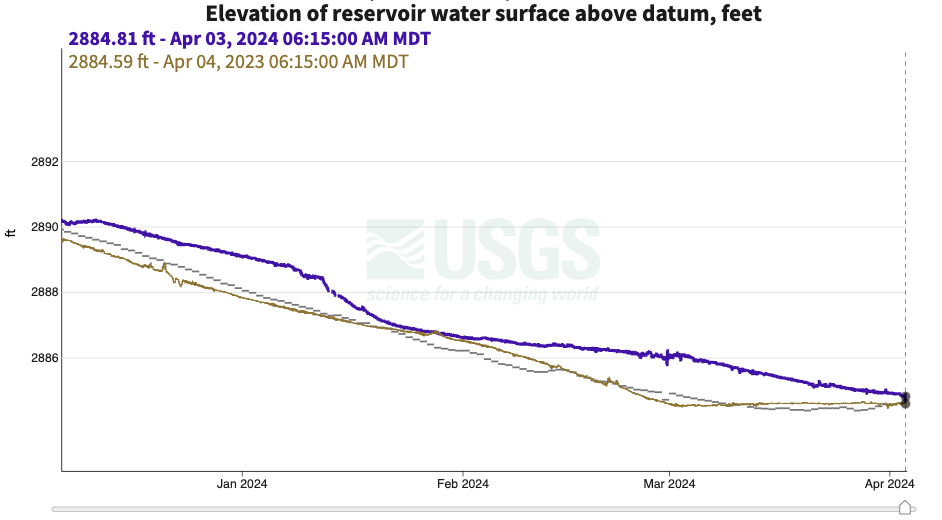Energy Keepers Receives Approval for Flathead Lake Level Variation
The approval from the U.S. Army Corps of Engineers, also granted last year, allows for a higher spring lake level, increasing the likelihood of refilling the lake to full pool by summer
By Micah Drew
The U.S. Army Corps of Engineers (USACE) on March 25 approved a request from Energy Keepers, Inc., (EKI) the company that owns and operates the Seli’š Ksanka Qlispe’ (SKQ) Dam, to deviate from the Flood Risk Management Plan and allow dam operators to keep the lake at a higher level than normal this spring. By raising the level by two feet, less water will be needed to refill the lake to full pool this summer.
Energy Keepers, a Confederated Salish and Kootenai Tribes corporation, is responsible for controlling the top 10 feet of Flathead Lake, which amounts to 1.2 million acre-feet of water storage. Under normal operating procedures, the dam-controlled lake drops to its lowest point, 2,883 feet, by April 15 to provide flood control across the region, then rises to 3 feet from full pool by Memorial Day, its hitting full pool elevation of around 2,893 by June 12. The goal is to then operate near the full-pool range through Labor Day, according to EKI CEO Brian Lipscomb, before lowering the levels in October to mitigate erosion from fall storms.
However, as seen with last year’s drought conditions, operating at full-pool level is not always feasible within the constraints of the dam’s federal operating license, which has legally mandated outflows to the lower Flathead River, and reliance on natural water supply. A common misconception, Lipscomb said, is that the 2,893 full-pool elevation is required under the dam’s federal license — but neither the license, nor the USACE flood risk plan have any legal requirements to maintain water levels during the summer.
EKI requested the deviation from USACE to increase the possibility of refilling the lake to full-pool this spring as water supply forecasts continue to come in below the 30-year average. The same deviation request was granted last year, allowing operators to begin refilling the lake several weeks earlier than normal to offset hydrological deficiencies.
“By taking these actions early in the season we increase the likelihood Flathead Lake will reach its maximum elevation in what forecasters are predicting as another dry year,” Lipscomb said in a press release. “Should we experience unforeseen precipitation then we can make further adjustments. By May, we are prepared to make further changes to standard operations depending on weather conditions.”
According to EKI’s monthly filings with the Federal Energy Regulatory Commission, inflows into Flathead Lake in January, February and March were just below normal — 86%, 98% and 80%, respectively.
